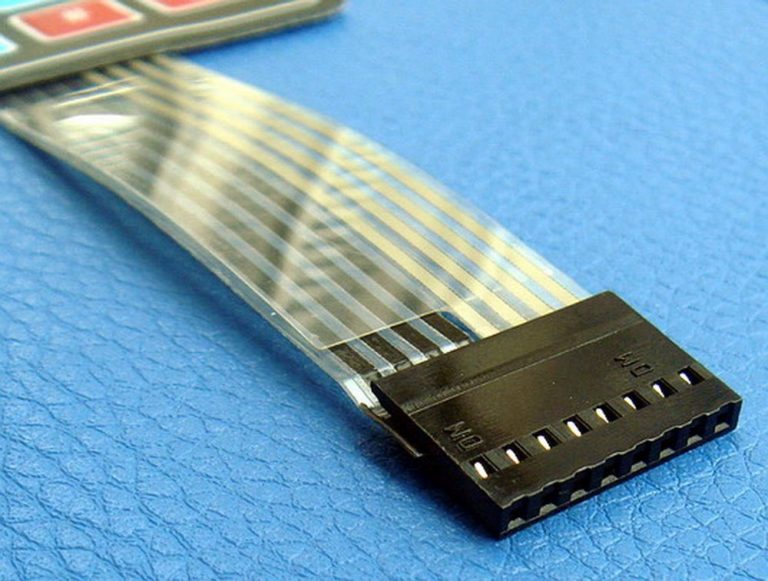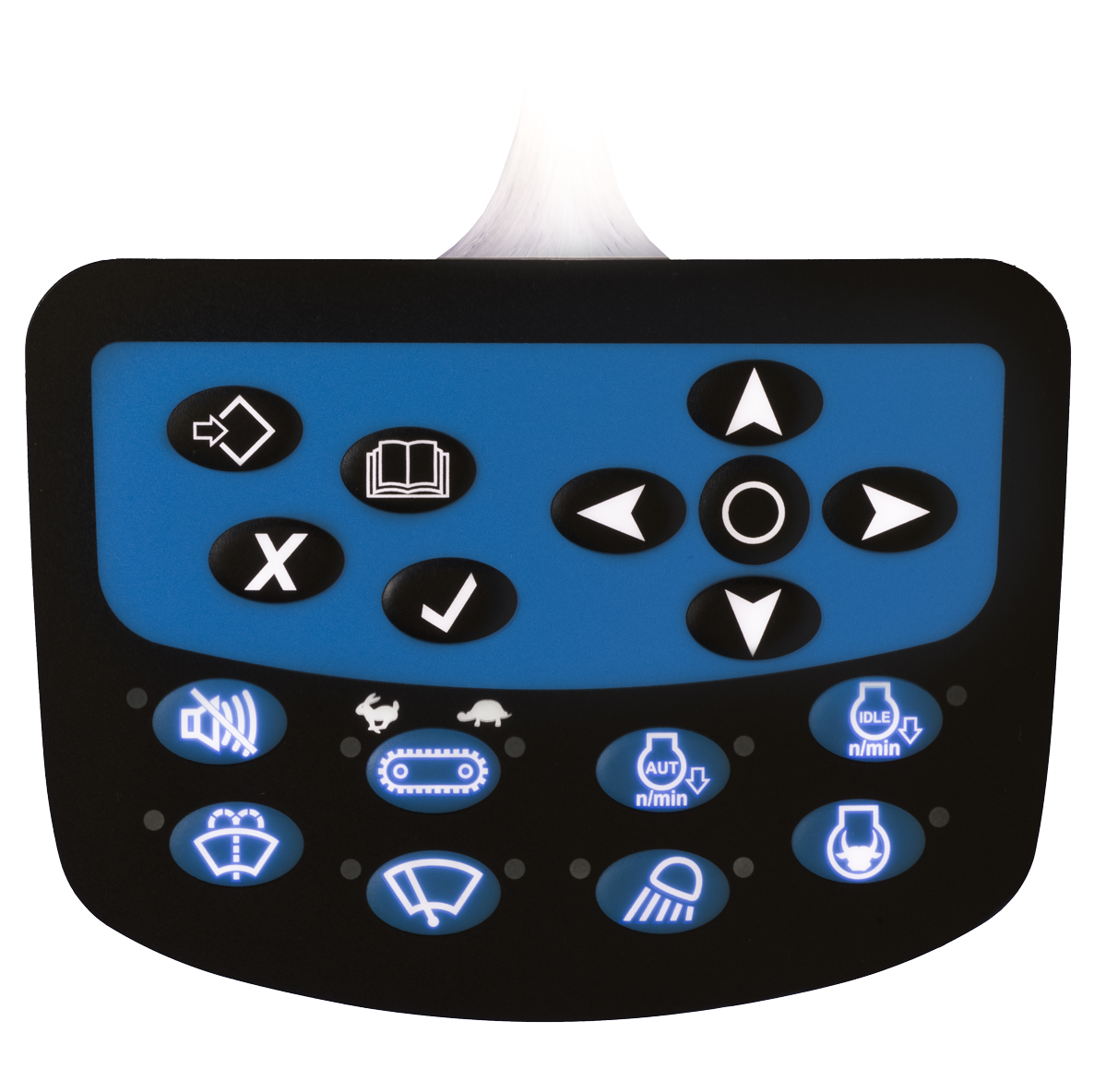All About Membrane Layer Change: Comprehending Its Design and Functionality
When you consider the control interfaces in contemporary gadgets, membrane buttons typically come to mind. These elements are greater than simply switches; they blend design and performance perfectly. Comprehending exactly how they function and what makes them efficient can transform your point of view on day-to-day electronics. But, there are subtleties to their style and efficiency that you may not understand. Let's explore what sets membrane switches over aside from other control systems.
What Are Membrane Layer Buttons?

Membrane buttons can also be tailored pertaining to shape, dimension, and graphics, permitting suppliers to produce unique user interfaces tailored to certain items. Generally, membrane layer switches play a considerable function in improving user experience throughout a large variety of applications.
How Membrane Switches Work
When you press a secret on a membrane button, it triggers a simple yet reliable mechanism. The leading layer, usually made from flexible product, lowers onto a conductive layer beneath it. This action bridges the gap between conductive traces, completing an electrical circuit. As soon as the circuit shuts, it sends a signal to the tool's controller, which analyzes your input.
You'll observe that the tactile responses differs based upon the button design, offering either a soft click or an extra obvious reaction. As soon as you release the trick, the membrane layer returns to its original setting, resuming the circuit and stopping the signal. This process happens practically immediately, guaranteeing a responsive customer experience.
Membrane buttons are preferred due to their durability and resistance to dirt and moisture, making them excellent for various applications, from family appliances to clinical gadgets. Understanding this operation helps you value their prevalent usage.
Trick Elements of Membrane Buttons
Comprehending the vital parts of membrane buttons is essential for understanding their functionality and style. The safety layer guards versus ecological factors and use, prolonging the button's lifespan. By recognizing these components, you'll obtain understanding right into exactly how membrane changes operate and their relevance in numerous applications.
Materials Used in Membrane Layer Change Layout
The efficiency and longevity of membrane layer changes greatly depend on the products utilized in their style. You normally experience polyester and polycarbonate as main substratums because of their superb toughness and versatility. These materials stand up to scrapes and chemicals, making them perfect for requiring environments.
The conductive layers usually make use of silver or carbon, chosen for their reliability and conductivity. membrane switch manufacturer. Silver offers premium efficiency, while carbon is an affordable alternative. For the overlay, you may consider a matte or glossy finish, relying on your aesthetic needs and customer experience
Adhesives play an essential role also; they bond layers firmly and assure longevity. Make sure to pick adhesives that endure environmental aspects like temperature and moisture. Don't ignore the value of an excellent printing strategy for graphics, as it improves both functionality and visual charm. Choosing the appropriate materials will ensure your membrane layer button stands the test of time.
Design Considerations for Membrane Layer Buttons
While designing membrane switches, it's vital to consider numerous variables that influence their functionality and user experience. Beginning by focusing on the design and button size; make particular they're intuitive and simple to navigate. Take into consideration the tactile feedback you want to provide-- will customers need a recognizable click or a softer touch? Furthermore, think of the products you'll use, as they'll impact toughness and aesthetic appeals.
Do not forget the visuals design; clear labeling and shade comparison are significant for visibility. Confirm your style fits environmental factors, like wetness or temperature level variants, which could influence efficiency. Ultimately, keep in mind the value of testing models with genuine customers to collect responses and make required adjustments. This repetitive procedure helps you improve the design, validating it fulfills both useful and visual needs successfully. By carefully considering these components, you'll produce a membrane button that enhances functionality and satisfaction.
Applications of Membrane Buttons
Membrane layer switches are flexible components found in numerous applications, from industrial equipment to customer electronics. You'll see their influence in devices that need durable interfaces and in gadgets that benefit from streamlined designs. Understanding these applications assists you value the functionality and usefulness of membrane layer switches in daily innovation.
Industrial Devices Use
When you're seeking to enhance the functionality of commercial equipment, membrane layer switches provide a reliable solution that combines toughness with straightforward design. These switches are best for harsh environments, offering resistance to dust, moisture, and chemicals. You'll find them in control panels for producing machines, cooling and heating systems, and clinical tools, where precision and responsiveness are essential. Their low account means they fit effortlessly right into numerous tools, conserving valuable area while maintaining simplicity of use. With customizable graphics and backlighting alternatives, you can create an user-friendly user interface for operators, boosting effectiveness and safety. And this link also, their lengthy life-span minimizes maintenance costs, making them a clever investment for your industrial applications. Embrace membrane buttons to streamline your operations and boost total performance.
Customer Electronics Combination
In the domain of consumer electronic devices, membrane switches play an important duty in boosting individual interaction and gadget capability. Membrane switches additionally guarantee durability and resistance to dirt and moisture, prolonging the lifespan of your electronic devices. By choosing membrane layer buttons, you enhance not simply the functionality but additionally the design of your gadgets, making daily communications smooth and delightful.
Benefits and Disadvantages of Membrane Switches
While membrane buttons provide a variety of advantages, they also come with some drawbacks that you ought to take into consideration. One considerable advantage is their portable layout, making them ideal for space-constrained applications.

However, there are drawbacks. Membrane buttons can have a much shorter life-span compared to mechanical switches, particularly under hefty usage. They can also be less tactile, which might impact customer comments during operation. Additionally, if damaged, fixing them can be tough and commonly needs complete substitute. Eventually, their level of sensitivity to extreme temperature levels and environmental problems might restrict their performance in particular settings. Stabilizing these pros and cons will certainly assist you identify if membrane layer buttons are the right suitable for your task.
Regularly Asked Concerns
How Lengthy Do Membrane Switches Over Typically Last?
Membrane layer changes usually last in between 5 to ten years, depending on usage and environmental problems. You'll want to review factors like wear, direct exposure to moisture, and temperature fluctuations to gauge their longevity effectively.
Can Membrane Layer Switches Over Be Custom-made for Details Designs?
Yes, you can personalize membrane switches to fit details layouts (membrane switch manufacturer). You'll have the freedom to pick shades, shapes, and layouts that match your job's requirements, guaranteeing they blend seamlessly with your overall visual
What Is the Expense Variety for Membrane Switch Over Production?
The cost range for membrane switch manufacturing usually drops between $1 and $10 per device, depending on elements like design complexity, amount, and materials. You can get quotes from suppliers to find the very best option.

Are Membrane Layer Switches Water Resistant or Immune?
Membrane switches can be developed to be water-proof or resistant, depending upon products made use of and construction techniques. If you require them index for wet settings, ensure you define those requirements throughout the style procedure.
How Do Membrane Layer Switches Over Contrast to Typical Switches?
Membrane layer switches are generally thinner and much more versatile than typical switches, providing a streamlined style. They're frequently easier to clean and integrate, but could not provide the responsive comments you're utilized to with mechanical alternatives.
Conclusion
